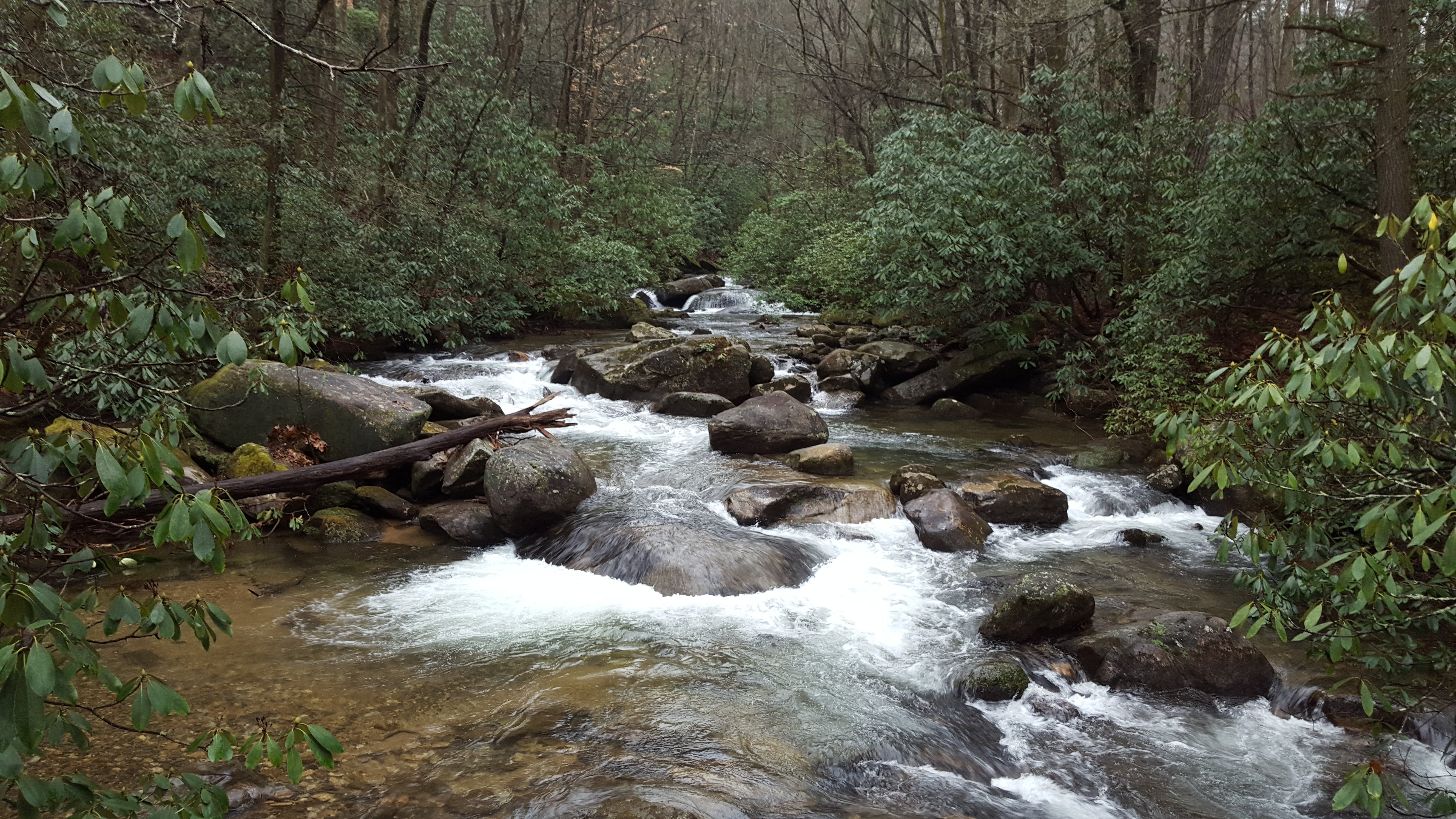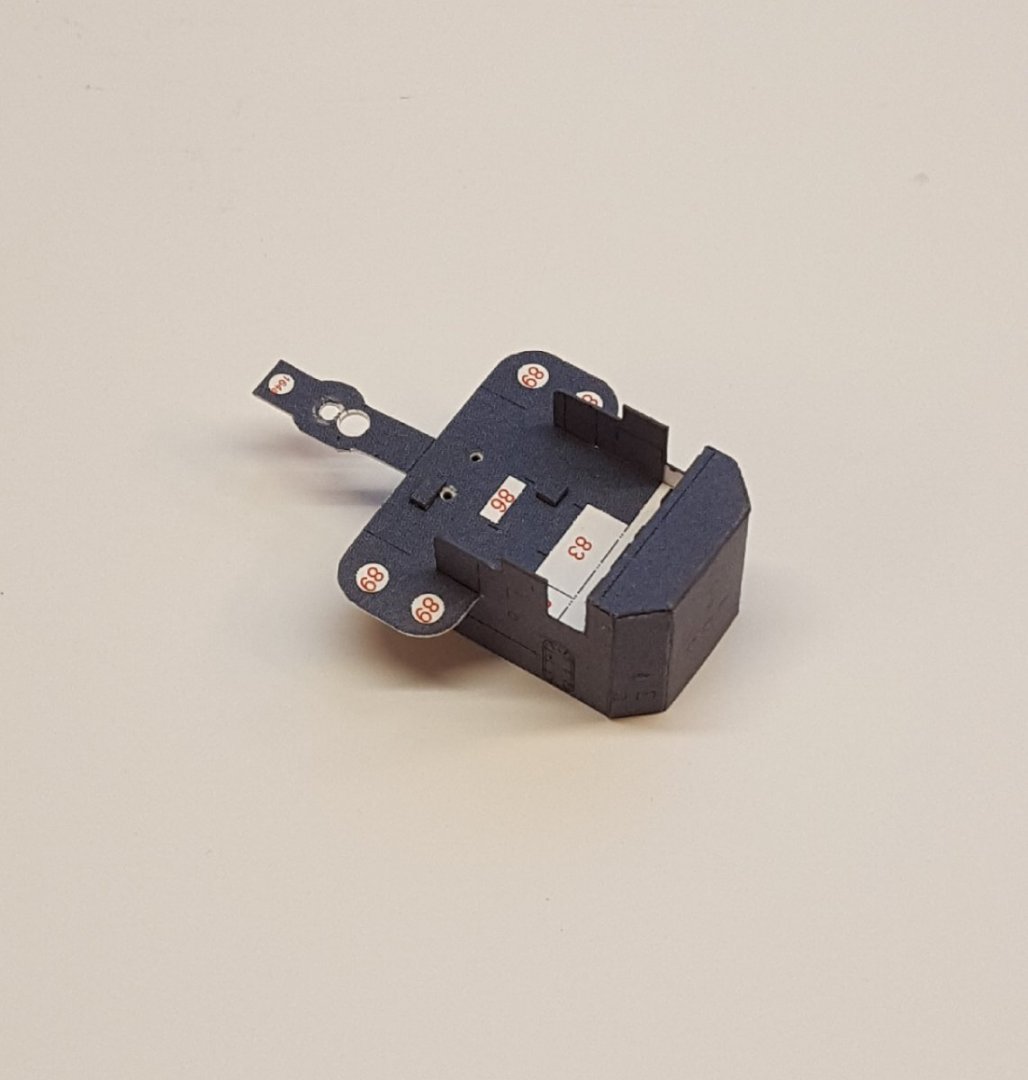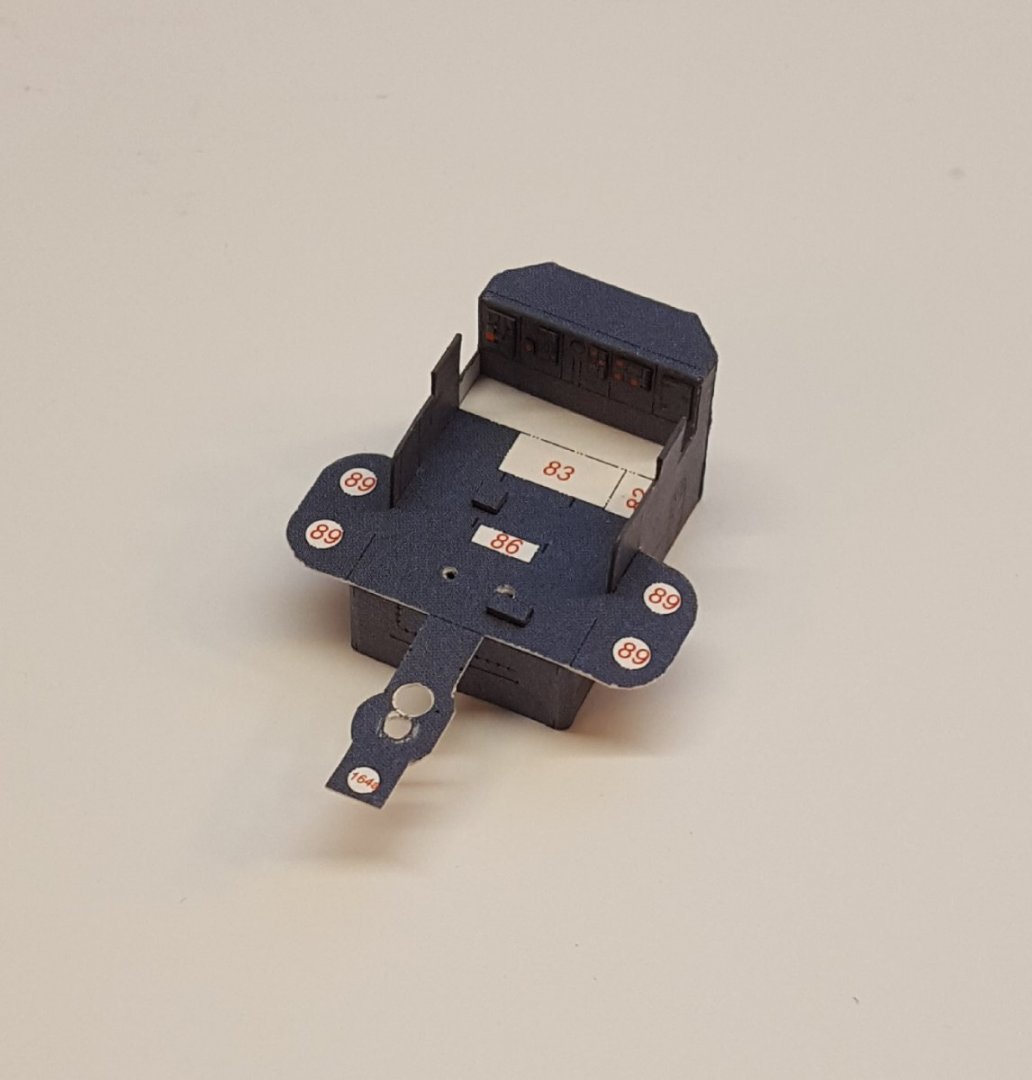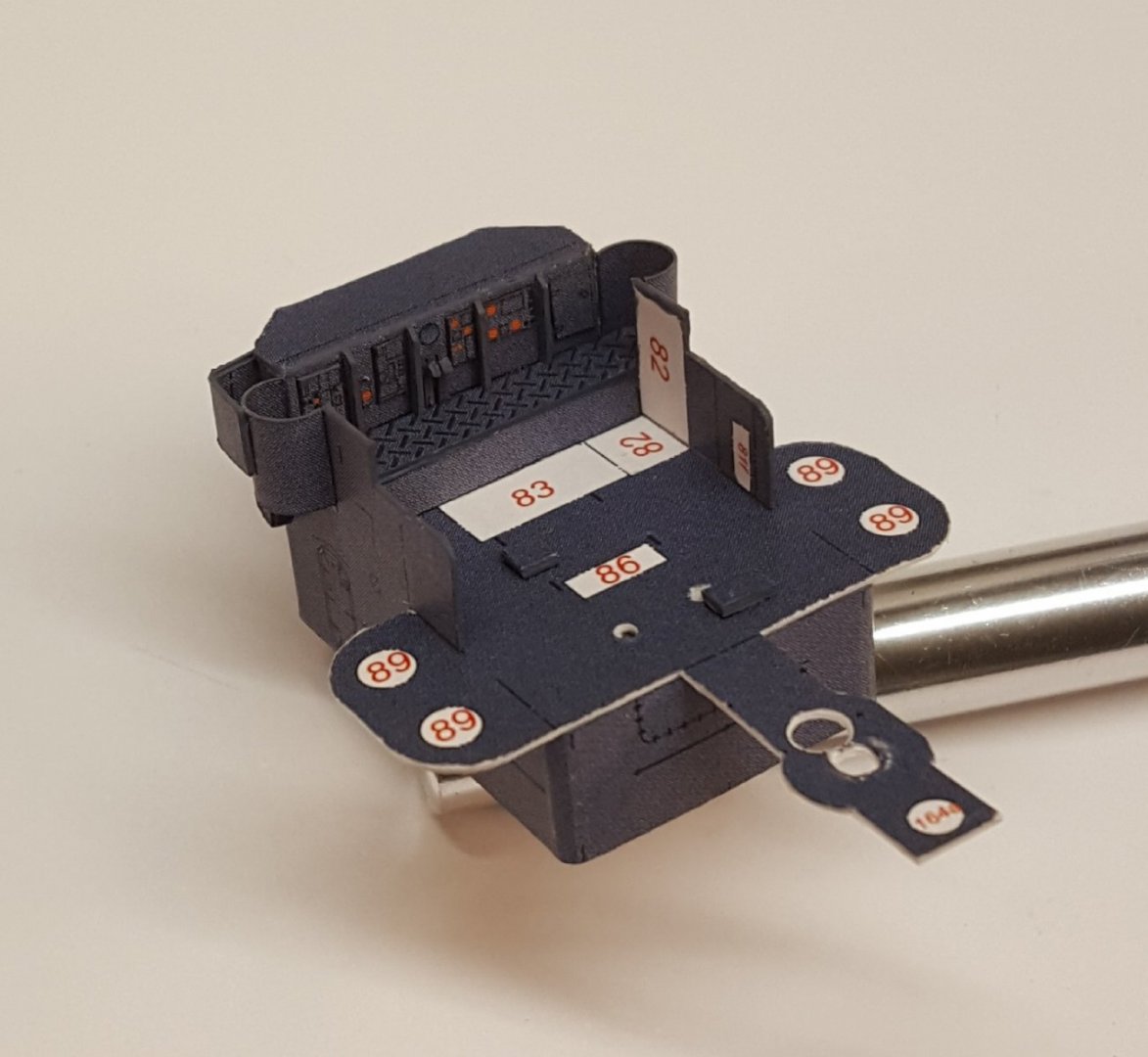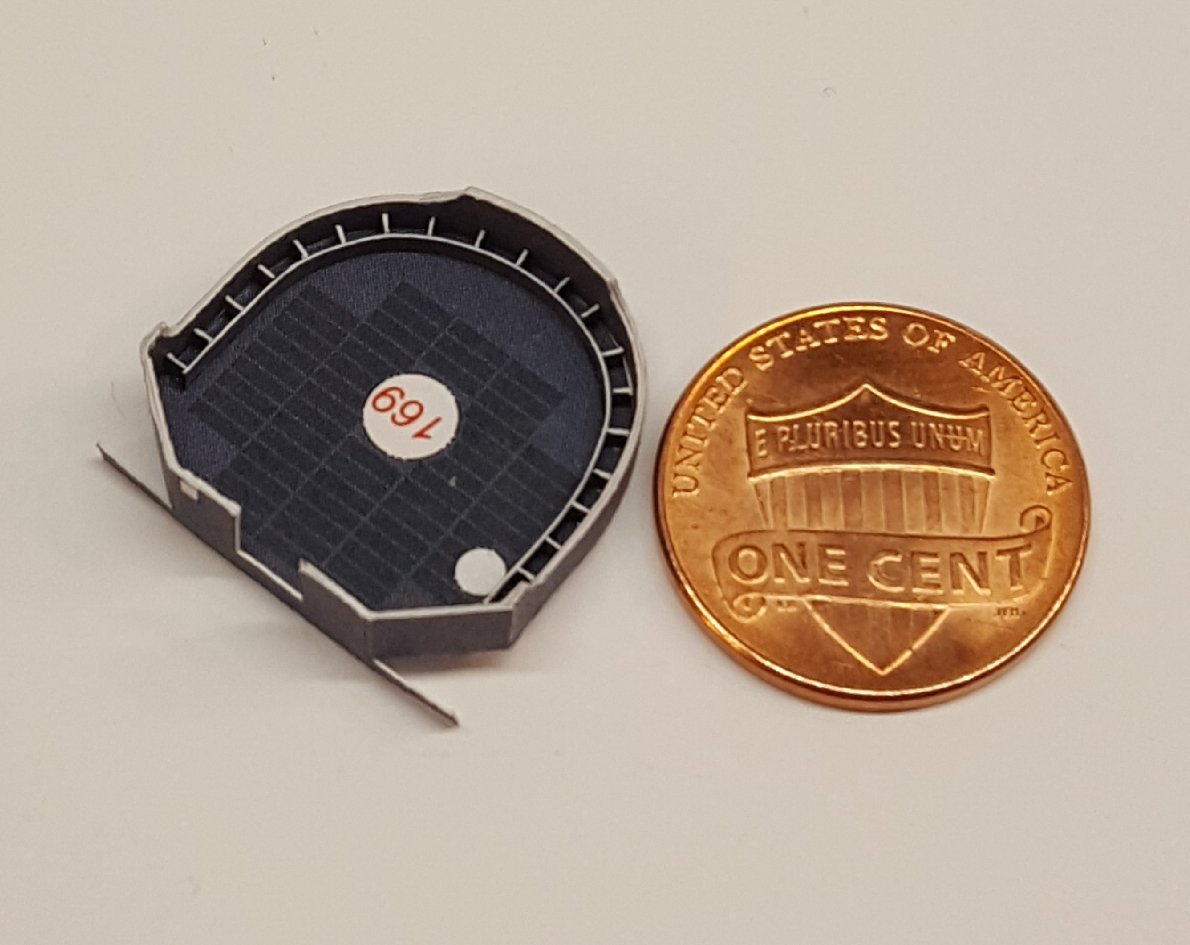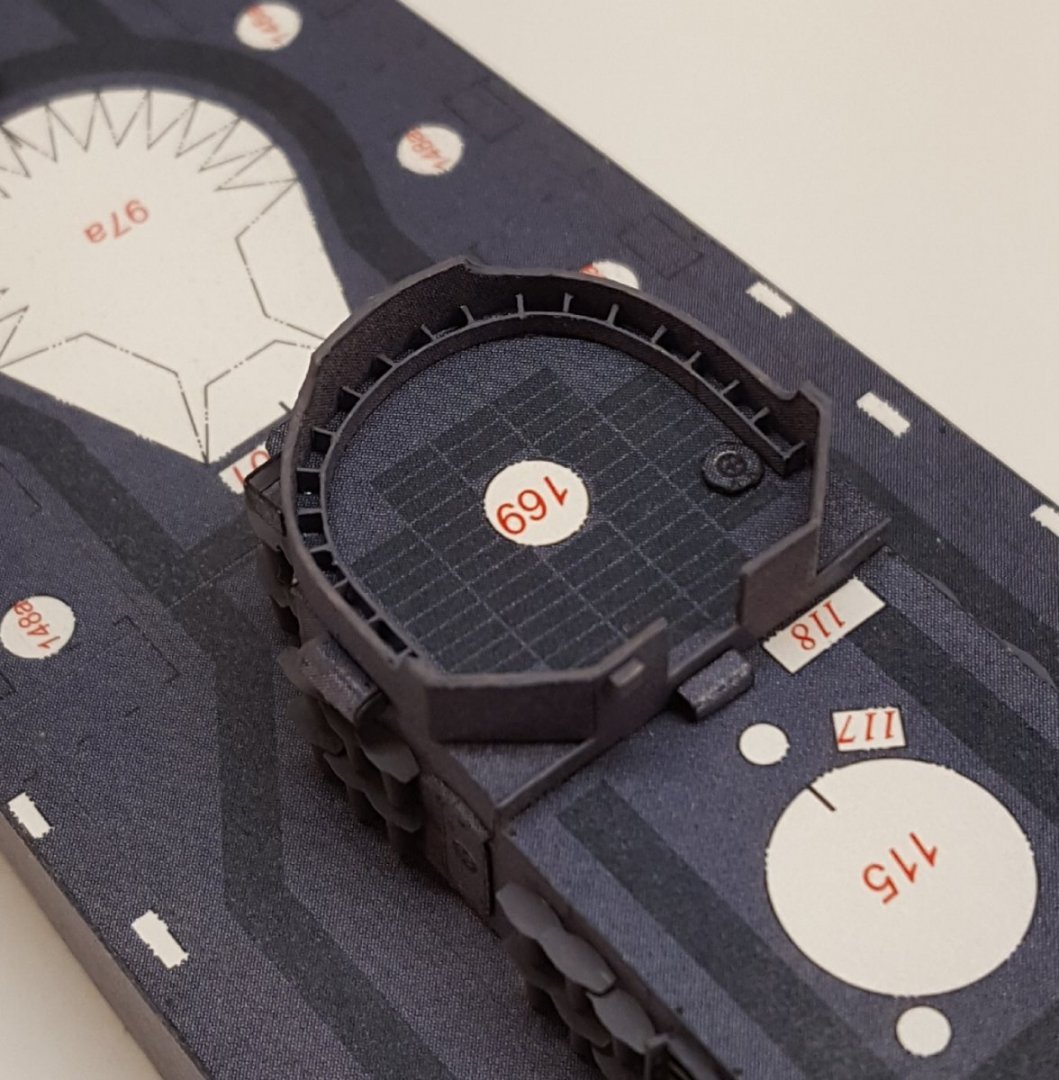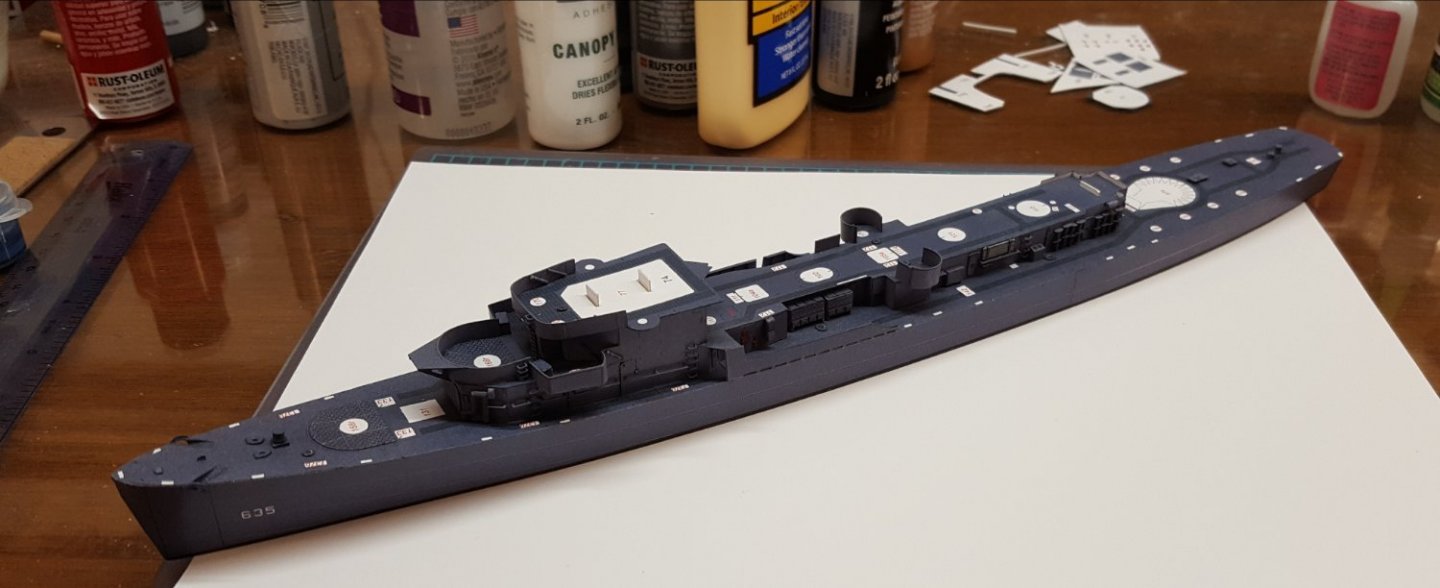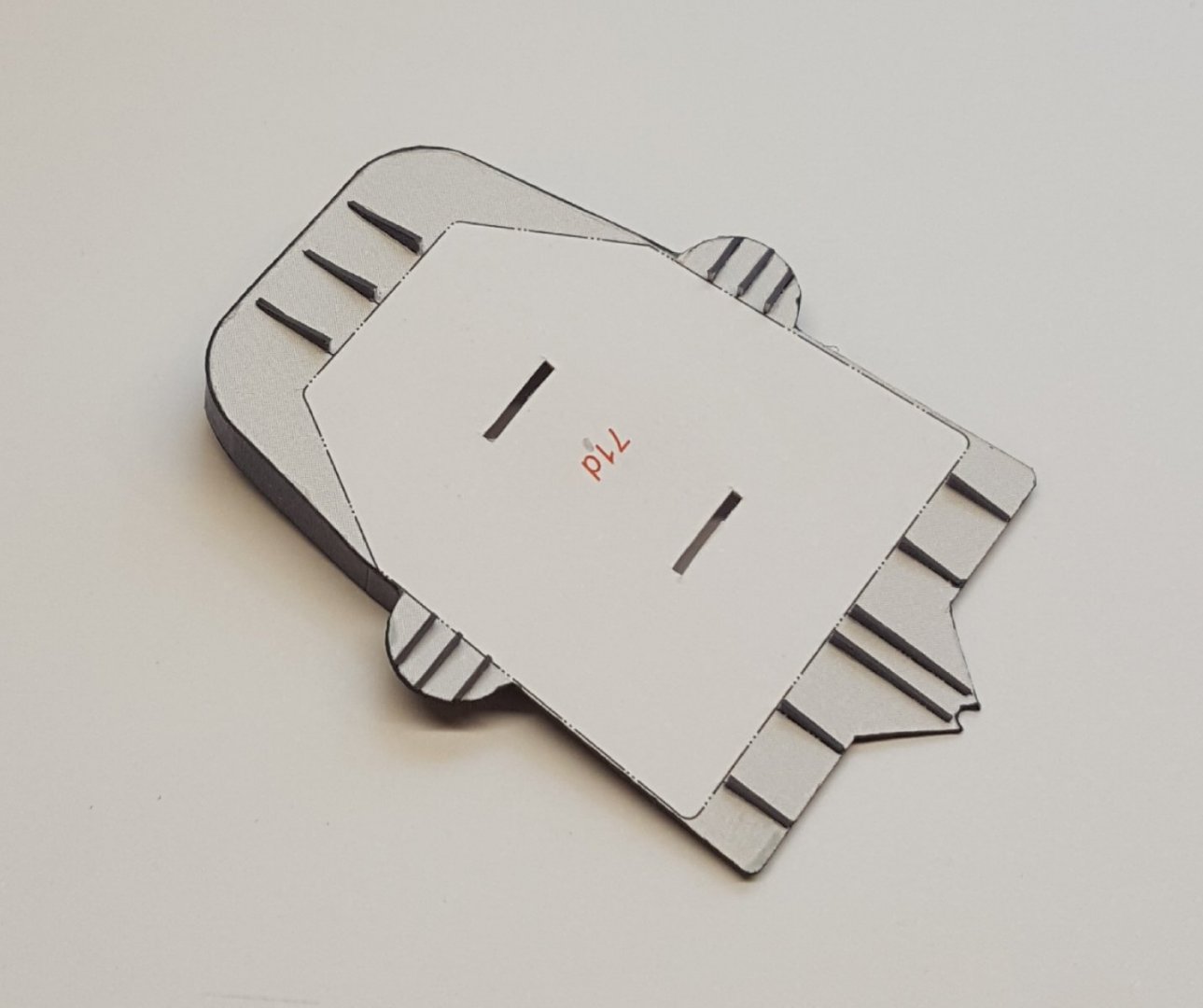-
Posts
10,365 -
Joined
-
Last visited
Content Type
Profiles
Forums
Gallery
Events
Everything posted by ccoyle
-
Moin, moin! Your English is very good, and no one will expect you to get all of the naval jargon correct. You have picked a challenging model for a first project, but you will find assistance here when you need it. Good luck!
- 12 replies
-
- Thermopylae
- Sergal
-
(and 2 more)
Tagged with:
-
That's time well spent. I'm not entirely pleased with some of my early planking efforts and often wish that I had taken more care with them.
- 65 replies
-
- Ballahoo
- Caldercraft
-
(and 1 more)
Tagged with:
-
Welcome! As a kid, I regarded my finished plastic models as something akin to sacred objects, but I did have friends in the "blow 'em up" crowd. The Swift kit has gotten many a modeler past the first-build hurdle. After completing her, I'd strongly encourage you to do an intermediate-level kit before taking on the Connie. Happily, these days there are many very well designed kits of schooners, brigs, and smaller three-masted sloops of that era available in kit form. Cheers!
-
"Much malighned"? Yes, and deservedly so, but hey -- I built the box-scale USS New Jersey back in the day, so I'm game for a trip down memory lane. "Fool's errand"? Who's to say? That depends on your skill and creativity -- it might turn out fabulous. The important thing is to have fun. My only concern so far (and BTW I don't build in plastic, for whatever that's worth) is that there will be a significant and likely noticeable difference between the 1/535 scale kit and the 1/500 PE parts. The difference might not be glaringly apparent for smaller items like the light AA weapons, but I'm pretty sure it will cause fit issues with something as large as the superstructure. Carry on!
-
Hi, Mark! The flattie was the second wooden kit I ever built.
-
16: Bridge Work on the bridge has started. It began with an internal skeleton made of six formers. This was then wrapped with a single-piece wall and topped with a deck. The various control panels were doubled. Then work commenced on the many, many elements that will be added to this small structure. Here's the progress so far on the forward elements. These brought the bridge parts count to 29. Cheers!
-

Do you use these, comments?
ccoyle replied to Dave_E's topic in Modeling tools and Workshop Equipment
Left to right: no, no, and I made my own from purloined sewing needles and bamboo skewers. -
13-15: stuff Yes, you read that right. Steps 13-15 cover a small handful of tiny lockers, valves, and watertight doors. I didn't take any pictures, because all of these would be difficult to spot amongst all of the already-added bits and pieces -- it's a very busy deck with a lot of 'white spots' to kill. I will add pictures once I get started on the next major assembly, the bridge. Cheers!
-
Considering the vital role she played in securing the supply routes to Australia, I should think that USS Lexington (CV-2) was worthy of a piece of your rapidly diminishing shelf space. 😉 If you do a battleship, I'd vote for one of the South Dakota-class -- I've always liked them.
- 126 replies
-
- Thetis Bay
- Finished
- (and 4 more)
-

SOLEIL ROYAL 1669 by michel saunier
ccoyle replied to michel saunier's topic in - Build logs for subjects built 1501 - 1750
You might have missed the announcement that Michel recently passed away. -
Considerably more detailed than the ones I will be crafting in paper for USS England!
- 126 replies
-
- Thetis Bay
- Finished
- (and 4 more)
-

Cap San Diego by mikegr - 1/160
ccoyle replied to mikegr's topic in - Build logs for subjects built 1901 - Present Day
Brother, I laughed when I read that, but keep at it -- 0.5 net steps is still progress! -
Congratulations, Jimmy! I built this kit myself, but bashed it into a West Coast lumber schooner, so I'm well acquainted with all of its many shortcomings. Finishing this as a first kit is definitely a noteworthy accomplishment! You will find the newer, better-designed kits coming out these days to be a breeze in comparison, should you choose to go that route. Cheers!
- 11 replies
-
- Corel
- Flying Fish
-
(and 2 more)
Tagged with:
-
I wondered about that when I was building HMV's tropical version of SMS Emden. It was very orange indeed and quite different from what was shown on the computer-drafted cover version.
-
12: aft gun tub Step 11 consisted of only two wire parts, easily dealt with. Step 12 was the construction of the gun tub for the "Chicago piano" quad 1.1" AA mount. First the basic gun tub w/o edge coloring. And the finished tub glued in place. Total parts count for this structure came to 28.
-
To repeat: Modellers Shipyard makes the kit; Modeler's Central is the soft-on-piracy vendor. It's confusing, but don't mix up the two -- as far as I know (for now), they're not the same entity.
-
To be clear, the kit is being produced by Modellers Shipyard, not Modeler's Central. The latter is a vendor who also operate a FB group. And to be perfectly frank, I would not do business with Modeler's Central, since they do not share the NRG/MSW stance on model kit piracy. Their FB group does not allow any criticism of any manufacturer in any form, and that policy is extended to copycats such as ZHL. I just left the Modeler's Central FB group yesterday because of that very fact.
-
Hello, John. I remember the news of Wawona being broken up. Sad news it was, too, since she was one of only two surviving ships from the Bendixsen yard in Fairhaven (the other surviving ship is C A Thayer, now at the San Francisco Maritime National Historic Park). I lived in or near Eureka for many years and worked on many of the old timber holdings of PALCO, Carson & Dolbeer, etc., so I have a particular fondness for all things related to the West Coast lumbering trade. You might already be aware that one of the largest shipbuilding yards on the West Coast, in addition to the Bendixsen yard, was that of the Hall Brothers in Port Blakely, not too far from you. As you probably know, ships like Wawona were built on the basis of half-hull models rather than plans, so details of their construction are shrouded in the mists of history. One of our members has been doing a digital reconstruction of the brigantine Galilee, which was another West Coast-built, wooden-hulled merchantman, though built at the Matthew Turner yard in Benicia. If you are interested, you can see that work here. Cheers! Chris
-
10: Superstructure (cont'd) This completes the construction sequence up through Step 10. The hull and superstructure are now joined. I hope you are enjoying this "10,000-foot view." Personally, this bit left me with a bad case of the "Curse of the Headband Magnifier" -- can't work without it, but the trade-off is that every stinkin' little cosmetic error is highly visible while I work. It's a little depressing, honestly. Thank goodness for low-res photography!
-
Congratulations! Your dory looks charming. Are you of Dutch extraction? Some of my Dutch ancestors settled in New Amsterdam circa 1650, and one was the first schoolmaster of Flatbush.
- 42 replies
-
- BlueJacket Shipcrafters
- Swampscott Dory
-
(and 2 more)
Tagged with:
-
10: Superstructure (cont'd) Not much in this post. I finished up the CIC roof. Not a whole lot to see on the top side, though I did make things only slightly more interesting by accidentally gluing in the inner wall upside down. The underside has helped inflate the parts count thanks to its 15 support brackets. A test fit of the roof was successful. Finally assembly will take place once the hull and superstructure are mated, which is next up on the to-do list. 😬
-
I have been experimenting with using the Evergreen Canopy Glue for paper-paper joints, and actually so far I quite like it -- has a few seconds of working time, but then locks up tight. Dries clear. And one important feature that pleasantly surprised me is that it can be applied to long edges in a nice bead without beading up, if you catch my meaning. It also fills small gaps nicely.
About us
Modelshipworld - Advancing Ship Modeling through Research
SSL Secured
Your security is important for us so this Website is SSL-Secured
NRG Mailing Address
Nautical Research Guild
237 South Lincoln Street
Westmont IL, 60559-1917
Model Ship World ® and the MSW logo are Registered Trademarks, and belong to the Nautical Research Guild (United States Patent and Trademark Office: No. 6,929,264 & No. 6,929,274, registered Dec. 20, 2022)
Helpful Links
About the NRG
If you enjoy building ship models that are historically accurate as well as beautiful, then The Nautical Research Guild (NRG) is just right for you.
The Guild is a non-profit educational organization whose mission is to “Advance Ship Modeling Through Research”. We provide support to our members in their efforts to raise the quality of their model ships.
The Nautical Research Guild has published our world-renowned quarterly magazine, The Nautical Research Journal, since 1955. The pages of the Journal are full of articles by accomplished ship modelers who show you how they create those exquisite details on their models, and by maritime historians who show you the correct details to build. The Journal is available in both print and digital editions. Go to the NRG web site (www.thenrg.org) to download a complimentary digital copy of the Journal. The NRG also publishes plan sets, books and compilations of back issues of the Journal and the former Ships in Scale and Model Ship Builder magazines.

